Do you have a question about the TOTALINE P374-2900 and is the answer not in the manual?
Procedure to set the thermostat's current time and day of the week.
Identifies and describes the function of each button on the thermostat's front panel.
Explains the meaning of icons and information displayed on the thermostat's LCD screen.
How to configure the thermostat for programmable or non-programmable modes.
Details on choosing manual heat, cool, auto, or off operational modes.
Guide to setting up daily heating and cooling schedules with time periods and setpoints.
Steps for physically installing the optional humidity control module.
Configuring the internal jumper to enable humidification control functions.
How to set the desired indoor humidity level for the humidification system.
Setting the internal jumper to enable dehumidification control functions.
How to set the desired indoor humidity level for the dehumidification system.
Instructions on how to activate and utilize the emergency heat feature.
Setting the minimum temperature difference between heat and cool stages for efficiency.
Setting temperature ranges for activating and deactivating heating/cooling stages.
Setting MISC jumpers to enable control of programmable output functions.
Using the programmable output based on user-defined time schedules.
Setting the thermostat to use or just read remote sensor data for temperature control.
Activating and understanding the thermostat's learning energy-saving feature.
Procedure to restore the thermostat to its original factory settings and configurations.
Procedure to set the thermostat's current time and day of the week.
Identifies and describes the function of each button on the thermostat's front panel.
Explains the meaning of icons and information displayed on the thermostat's LCD screen.
How to configure the thermostat for programmable or non-programmable modes.
Details on choosing manual heat, cool, auto, or off operational modes.
Guide to setting up daily heating and cooling schedules with time periods and setpoints.
Steps for physically installing the optional humidity control module.
Configuring the internal jumper to enable humidification control functions.
How to set the desired indoor humidity level for the humidification system.
Setting the internal jumper to enable dehumidification control functions.
How to set the desired indoor humidity level for the dehumidification system.
Instructions on how to activate and utilize the emergency heat feature.
Setting the minimum temperature difference between heat and cool stages for efficiency.
Setting temperature ranges for activating and deactivating heating/cooling stages.
Setting MISC jumpers to enable control of programmable output functions.
Using the programmable output based on user-defined time schedules.
Setting the thermostat to use or just read remote sensor data for temperature control.
Activating and understanding the thermostat's learning energy-saving feature.
Procedure to restore the thermostat to its original factory settings and configurations.
| Type | Non-programmable |
|---|---|
| Voltage | 24 VAC |
| Stages | 1 Heat/1 Cool |
| Display | Digital |
| Backlight | Yes |
| Programmable | No |
| Hold Feature | Yes |
| Filter Change Indicator | No |
| Compatibility | Conventional Systems |
| Temperature Range | 45°F to 90°F |
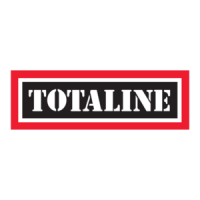
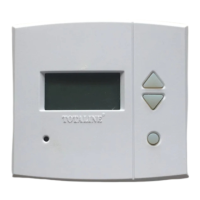
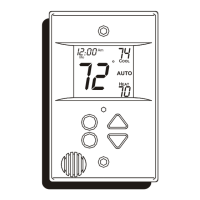
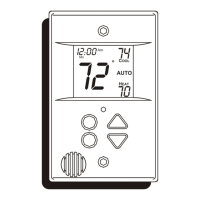
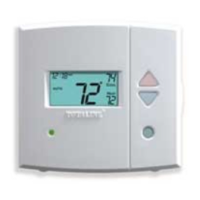
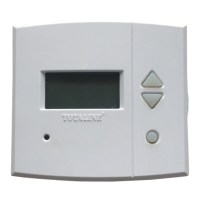
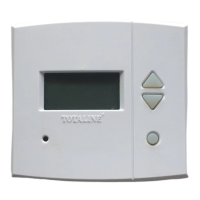
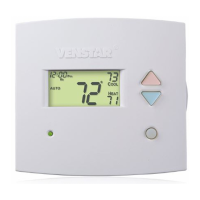
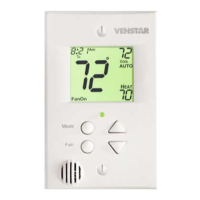
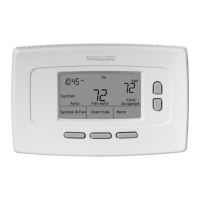
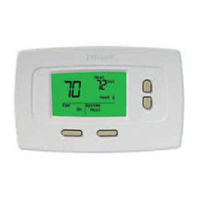
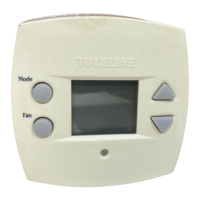
